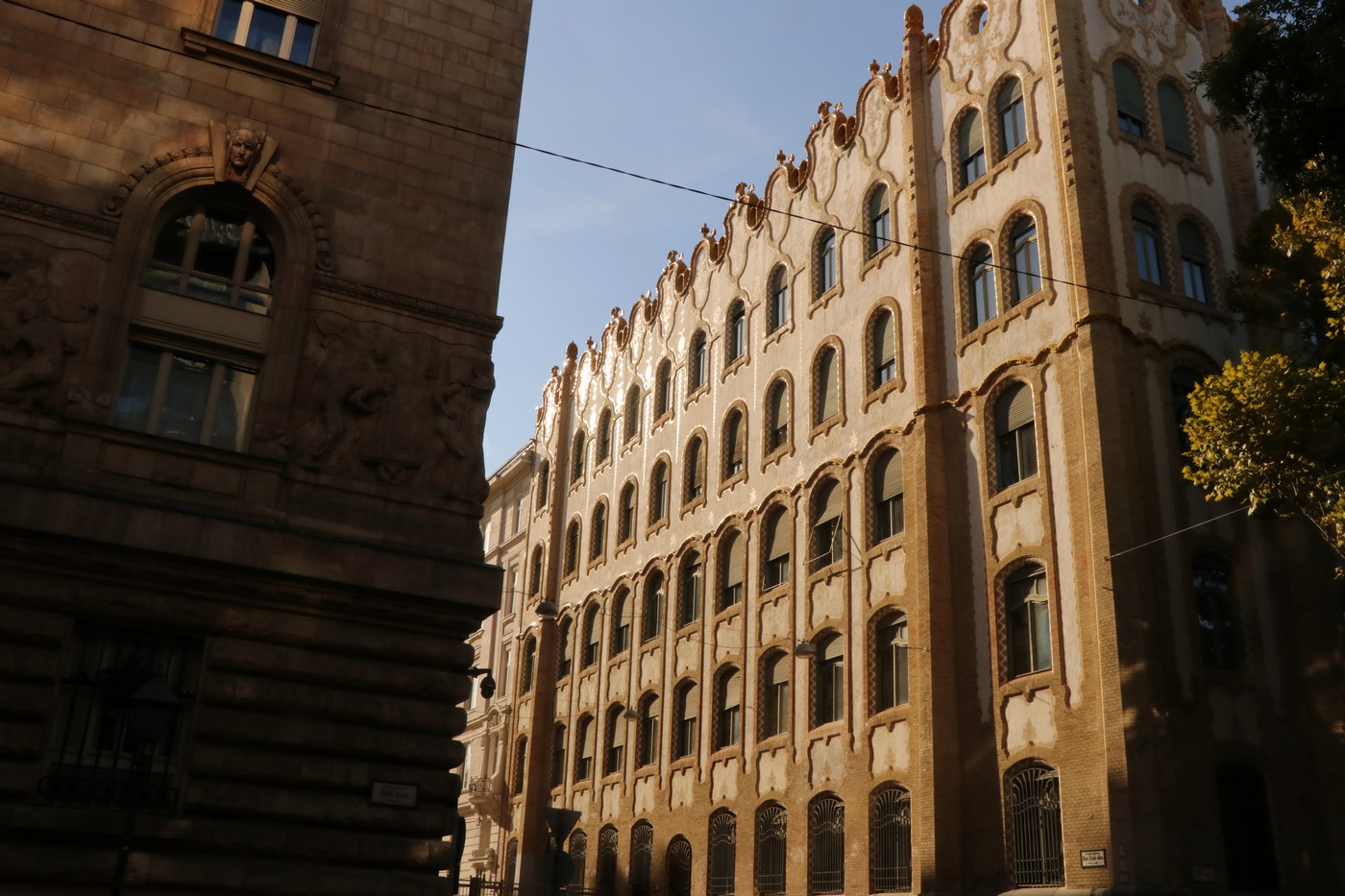History, examples, photos of the USSR architecture…
Art Noveau in Budapest – Hungarian Secession
upd 9 April 2024
Art Nouveau architecture spread throughout Europe at the beginning of the 20th century, and also became popular in Hungary. But here the style is called Secession (Szecesszió). Secession rejected past traditions, used new technologies of construction and was a way to express national identity. Hungarian Secession had several specific features: a mixture of eastern and southern themes and very extraordinary and colorful decorative elements in Moorish and Persian styles.

Postal Savings Bank
One of the best examples of Hungarian Secession in Budapest is Postatakarek Bank. The building was designed by Ödön Lechner – the main representative of a Hungarian national style. He often used Turkish folk art motifs which can be seen here. The roof is covered in colorful mosaic and is decorated with majolica beehives and bees, which symbolize hard work. However, almost all the decorations can’t be seen from the street. The architect was asked the reasom it was made if it remains unseen, and he told that he made it so that birds could admire the beautiful roof.
Lechner is often compared to Gaudí, and their fairy-tale style is indeed quite similar. However, unlike Gaudi, Lechner was more inspired by folklore.
Hold utca 4

Gresham Palace
In Gresham Insurance Head Office (Gresham Palace) is now Four Seasons hotel. The decor used plant motifs characteristic of Art Nouveau, as well as smooth lines flowing into each other. The rich interior has also been preserved, where you can see unique staircases, stained glass windows and grilles.
Széchenyi István tér 5-6


You can visit some of the mentioned buildings on varoius walking tours on Tiqets
Bedő House
Bedő House is often referred as the house of Hungarian Secession because here you can find an Art Nouveau museum. The exhibition is dedicated not only to architecture but also to 20th century furniture.
Honvéd utca 3


Paris Wholesale Store; Lotz Hall
This early 20th century shopping gallery is a mixture of Art Nouveau, Gothic and Moorish styles. You can see countless details of the facade and also should go inside to see a glass roof.
Ferenciek tere 10



Museum of Applied Arts
Ödön Lechner also designed the Museum of Applied Arts which is considered his best work. The museum resembles a colorful castle with a green-yellow roof, and its walls are decorated with national Hungarian ornaments.
Üllői út 33-37

Turkish bank – Á la Maison restaurant
On the facade of the former Turkish bank, you can immediately notice the contrast between the picturesque large-scale mosaics and large windows and balconies. The mosaic depicts the Virgin Mary with angels. The arched windows and flowing lines of balconies are also typical of Art Nouveau. The building was heavily damaged during the war, but several years ago it was completely restored.
Szervita tér 3


Thonet House
On the main promenade of Budapest, it will be difficult to pass by another expressive building by Lechner – Thonet House. The facade is almost entirely covered with pale blue tiles with patterns, and is also decorated with sculptures and openwork balconies.
Budapest, Váci u. 11-a


